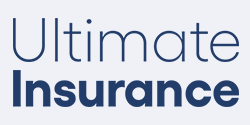When you’re buying a new car, you’ll also need to properly insure your new wheels to avoid heartbreak down the road.
Not only is it smart to get car insurance, but it’s also usually required by law. Nearly every state requires you to buy a minimum amount of car insurance.
States usually have a minimum of how much car insurance coverage you should purchase. And while getting this amount will keep you out of hot water with the law — it’s usually not robust enough to fully protect yourself from the financial damage of an accident.
Read on to learn more about the minimum level of car insurance you need to drive legally in your state and how to get the coverage you actually need.
KEY TAKEAWAYS
- Most states require you to purchase car insurance, although New Hampshire and Virginia are exceptions.
- States have their own rules for the minimum coverage that you must purchase.
- Some states require drivers purchase forms of car insurance coverage that are optional in other states.
- Typically, buying the minimum amount of insurance – and nothing more – isn’t adequate to protect your finances.
What is the state minimum for car insurance?
The minimum amount of car insurance is the level of coverage your state requires you to purchase if you plan to drive legally.
Nearly every state requires you to buy at least some liability insurance. This is the type of insurance that reimburses you when you damage a car, another person’s property or a person’s health.
“Insurance is regulated at the state level, and legal requirements vary from state to state,” says Scott Holeman, media relations director at the Insurance Information Institute.
Some states also require you to buy minimum levels of other coverages, such as:
- Uninsured/underinsured motorist coverage: This insurance reimburses you for damages caused by a driver who doesn’t have adequate car insurance coverage.
- Personal injury protection or medical payments coverage: This insurance covers medical expenses resulting from an accident, regardless of who is at fault.
State auto insurance rules differ depending on where you live, so make sure you know which laws apply to you.
Why do states impose a minimum for car insurance?
States impose minimum insurance requirements to make sure drivers have enough insurance to pay claims when accidents occur.
If these requirements were not in place, millions of accidents likely wouldn’t be reimbursed, causing financial hardship for those involved.
Minimum car insurance requirements by state
Minimum car insurance requirements vary by state. Here’s a look at each state’s requirements.
| State | Minimum car insurance limits |
|---|---|
| Alabama | Liability: 25/50/25 |
| Alaska | Liability: 50/100/25 |
| Arizona | Liability: 25/50/15 |
| Arkansas | Liability: 25/50/25 |
| California | Liability: 15/30/5 |
| Colorado | Liability: 25/50/15 |
| Connecticut | Liability: 25/50/25 |
| UM/UIM BI: 25/50 | |
| Delaware | Liability: 25/50/10 |
| PIP: 15/30 | |
| District of Columbia | Liability: 25/50/10 |
| UM BI: 25/50 | |
| UMPD: $5,000 | |
| Florida | Liability: 10/20/10 |
| PIP: $10,000 | |
| BI liability not required by Florida but many carriers require 10/20 | |
| Georgia | Liability: 25/50/25 |
| Hawaii | Liability: 20/40/10 |
| PIP or PPO: $10,000 | |
| Idaho | Liability: 25/50/15 |
| Illinois | Liability: 25/50/20 |
| UM BI: 25/50 | |
| Indiana | Liability: 25/50/25 |
| Iowa | Liability: 20/40/15 |
| Kansas | Liability: 25/50/25 |
| UM/UIM BI: 25/50 | |
| PIP: $4,500/person for medical expenses $900/month for one year for disability/loss of income $25/day for in-home services $2,000 for funeral, burial or cremation expense $4,500 for rehabilitation expense | |
| Kentucky | Liability: 25/50/25 |
| PIP: $10,000 | |
| Louisiana | Liability: 15/30/25 |
| Maine | Liability: 50/100/25 |
| UM/UIM BI: 50/100 | |
| Medical payments: $2,000 | |
| Maryland | Liability: 30/60/15 |
| UM/UIM BI: 30/60 | |
| UMPD: $15,000 | |
| PIP $2,500 | |
| Massachusetts | Liability: 20/40/5 |
| UM/UIM BI: 20/40 | |
| PIP: $8,000 | |
| Michigan | Liability: 50/100/10 |
| PIP: 6 choices from $50,000 to unlimited medical | |
| PPI: $1,000,000 | |
| Minnesota | Liability: 30/60/10 |
| UM/UIM BI: 25/50 | |
| PIP: $40,000 | |
| Mississippi | Liability: 25/50/25 |
| Missouri | Liability: 25/50/10 |
| UM BI: 25/50 | |
| Montana | Liability: 25/50/20 |
| Nebraska | Liability: 25/50/25 |
| UM/UIM BI: 25/50 | |
| Nevada | Liability: 25/50/20 |
| New Hampshire* | Liability: 25/50/25 |
| UM/UIM BI: 25/50 | |
| Medical payments: $1,000 | |
| *Insurance not mandatory in New Hampshire | |
| New Jersey | Liability: 15/30/5 (standard policy) |
| UM/UIM BI: 15/30 | |
| UMPD: $5,000 | |
| PIP: $15,000 | |
| New Mexico | Liability: 25/50/10 |
| New York | Liability: 25/50/10 |
| UM BI: 25/50 | |
| PIP: $50,000 | |
| North Carolina | Liability: 30/60/25 |
| UM BI: 30/60 | |
| UMPD: $25,000 | |
| North Dakota | Liability: 25/50/25 |
| UM/UIM BI: 25/50 | |
| PIP: $30,000 | |
| Ohio | Liability: 25/50/25 |
| Oklahoma | Liability: 25/50/25 |
| Oregon | Liability: 25/50/20 |
| UM BI: 25/50 | |
| PIP: $15,000 | |
| Pennsylvania | Liability: 15/30/5 |
| First-party benefits (PIP): $5,000 | |
| Rhode Island | Liability: 25/50/25 |
| South Carolina | Liability: 25/50/25 |
| UM BI: 25/50 | |
| UMPD: $25,000 | |
| South Dakota | Liability: 25/50/25 |
| UM/UIM BI: 25/50 | |
| Tennessee | Liability: 25/50/15 |
| Texas | Liability: 30/60/25 |
| Utah | Liability: 25/65/15 |
| PIP: $3,000 | |
| Vermont | Liability: 25/50/10 |
| UM/UIM BI: 50/100 | |
| UMPD: $10,000 | |
| Virginia | Liability: 30/60/20 |
| UM/UIM BI: 25/50 | |
| UMPD: $20,000 | |
| Washington | Liability: 25/50/10 |
| West Virginia | Liability: 25/50/25 |
| UM BI: 25/50 | |
| UMPD: $25,000 | |
| Wisconsin | Liability: 25/50/10 |
| UM BI: 25/50 | |
| Wyoming | Liability: 25/50/20 |
Source: Property Casualty Insurers Association of America and Insurance Information Institute; state departments of insurance and motor vehicles.
New Hampshire doesn’t require car insurance, but you must be able to show proof of financial responsibility if you’re in an accident.
QuickTake
What is the minimum amount of liability coverage required for car insurance?
The minimum liability coverage required for drivers is 25/50/25, which costs $25,000 per person, $50,000 in personal injury liability, and $25,000 in property damage liability.
- 25 – The first number in the liability coverage depicts the highest amount your insurance policy will pay for bodily injury claims for a single person. In this case, 25 represents $25,000 in coverage.
- 50 – The maximum amount your insurance company will pay for bodily injury claims in a whole accident is the second number in your liability coverage. This does not overlap the per-person limit of your liability coverage. In this case, 50 represents $50,000 in coverage.
- 25 – The maximum amount your insurance coverage will pay for property damage claims in the event of an at-fault accident is determined by the third number, which is typically 100. In this case, 25 represents $25,000 in coverage.
“Most insurance experts would recommend that auto insurance consumers purchase more coverage than the minimum requirements,” Holeman says.
In a worst-case scenario, you could be sued for hundreds of thousands of dollars – or more – if you seriously injure someone in a car accident.
“If a driver is at fault in an accident, the liability could far exceed the minimum required coverage,” Holeman says.
So, it’s important to purchase enough insurance to protect your assets.
How to read auto insurance liability limits
Auto insurance liability coverage has two parts. The first is bodily injury and the second is property damage.
Bodily injury pays for the medical expenses of those you harmed in an auto accident, up to your limits. Property damage covers the damage you caused to another vehicle or other property, such as a fence, in an auto accident.
Payment is up to your limits. Liability coverage does not cover your injuries or damages to your vehicle. Instead, it only covers damages to someone else’s vehicle, property or well-being.
Here’s how to read auto insurance liability minimum limits:
- First number: Bodily injury liability maximum for one person injured in an accident.
- Second number: Bodily injury liability maximum for all injuries in one accident.
- Third number: Property damage liability maximum for one accident.
For example, if you live in New York, the minimum liability limits are $25,000 for injury liability for one person, $50,000 for all injuries and $10,000 for property damage in an accident (written as 25/50/10).
Keep in mind that state requirements are the lowest limits you can carry and may not be adequate. A car accident can cost far more than the limits mandated by most states as medical expenses have skyrocketed and the value of vehicles has gone up.
Recommended auto insurance coverage per accident
You want to make sure you have enough car insurance coverage to protect you if you get in an accident. That includes protection to cover other driver and passenger injuries and against potential lawsuits.
Experts recommend at least:
- $100,000 in bodily injury protection per person per accident
- $300,000 in bodily injury protection per accident
- $100,000 in property damage per accident
That’s often referred to as 100/300/100 coverage.
Higher liability limits offer better protection and don’t cost that much more. So, if you can afford it, raise your limits to protect your assets, such as home and motor vehicles.
Car insurance coverage abbreviations
Here’s your guide to the car insurance acronyms in the chart below that lists the minimum car insurance coverages in each state. New Hampshire doesn’t mandate car insurance in its laws but instead requires you to provide financial responsibility if you cause an accident. The easiest way to provide this is with a car insurance policy.
Many states just require liability coverages, so you have a way to cover damages you cause to others. But some states require a variety of other coverages. Here is your cheat sheet for the abbreviations used in our chart for various coverages.
- UM: Uninsured motorist coverage
- UIM: Underinsured motorist coverage
- UMBI: Uninsured motorist bodily injury coverage
- UMPD: Uninsured motorist property damage coverage
- BI liability: Bodily injury liability
- PIP: Personal injury protection
- PPI: Property protection insurance (Michigan)
What are the minimum state standards for insurance?
The minimum state standards for insurance are as follows:
- Bodily injury liability (BI): Helps cover the medical expenses related to the other driver’s injuries. It also covers the legal fees, in case of the other driver suing you for their losses.
- Property Damage liability: Pays for the property damage caused to the others. For example, if you hit a car in an accident the property damage coverage will pay for the vehicle repairs of the other driver.
- Uninsured/Underinsured motorist coverage: This type of coverage provides financial protection, if the at-fault driver is uninsured or does not have enough coverage to pay for your losses
- Personal injury protection (PIP): A requirement in states with no-fault laws. It will cover the medical expenses, wage loss or repair costs irrespective of who caused the accident
- Medical payments coverage: Considered optional coverage in most states. It can be used in non-PIP states. It mostly covers medical expenses after an accident but is considered less effective than PIP.
Average car insurance rates for state minimum liability limits
The average national rate is $511, but the average annual rate varies state by state. See the average annual rate based on each state’s minimum requirements. The states are listed from cheapest to most expensive. Use the search box to find a specific state.
| State | State Minimum Premium |
|---|---|
| Alaska | $336 |
| Alabama | $420 |
| Arkansas | $422 |
| Arizona | $494 |
| California | $582 |
| Colorado | $467 |
| Connecticut | $773 |
| Washington D.C. | $577 |
| Delaware | $821 |
| Florida | $908 |
| Georgia | $567 |
| Hawaii | $389 |
| Iowa | $263 |
| Idaho | $326 |
| Illinois | $484 |
| Indiana | $384 |
| Kansas | $389 |
| Kentucky | $717 |
| Louisiana | $726 |
| Massachusetts | $523 |
| Maryland | $607 |
| Maine | $330 |
| Michigan | $711 |
| Minnesota | $479 |
| Missouri | $525 |
| Mississippi | $434 |
| Montana | $389 |
| North Carolina | $396 |
| North Dakota | $340 |
| Nebraska | $350 |
| New Hampshire | $411 |
| New Jersey | $989 |
| New Mexico | $376 |
| Nevada | $683 |
| New York | $875 |
| Ohio | $308 |
| Oklahoma | $352 |
| Oregon | $551 |
| Pennsylvania | $398 |
| Rhode Island | $648 |
| South Carolina | $628 |
| South Dakota | $267 |
| Tennessee | $368 |
| Texas | $520 |
| Utah | $526 |
| Virginia | $469 |
| Vermont | $306 |
| Washington | $505 |
| Wisconsin | $375 |
| West Virginia | $474 |
| Wyoming | $293 |
Average car insurance rates for state minimum liability limits by company
Car insurance companies don’t have standard rates for state minimum liability limits.
Here are the average rates by insurance company for state minimum liability limits by company.
| Company | Liability only — state Minimum |
|---|---|
| American National Finance | $187 |
| Vermont | $231 |
| Mapfre | $270 |
| USAA | $294 |
| Frankenmuth | $302 |
| Iowa Farm Bureau | $305 |
| Berkshire Hathaway | $326 |
| Southern Farm Bureau | $333 |
| Erie Insurance | $334 |
| North Carolina Farm Bureau | $353 |
| Auto Owners | $355 |
| Western National Mutual | $355 |
| Chubb Ltd | $372 |
| Westfield | $394 |
| Island Ins Co | $415 |
| Safety | $426 |
| Kentucky Farm Bureau | $432 |
| State Farm | $432 |
| American Mercury Ins Co | $446 |
| Country | $453 |
| Arbella Insurance | $483 |
| New Jersey Manufacturers | $494 |
| Nationwide | $495 |
| Oklahoma Farm Bureau | $509 |
| Auto Club | $517 |
| CSAA | $525 |
| Shelter | $530 |
| Travelers | $531 |
| Automobile Club Mi | $533 |
| Palisades | $535 |
| Progressive | $551 |
| Allstate | $555 |
| American Family Ins | $563 |
| Hartford | $623 |
| Farmers | $632 |
| Kemper Corp | $694 |
| Mercury Casualty | $719 |
| National Gen | $786 |
| Metropolitan | $835 |
| Safeway | $1,075 |
| Sentry | $1,588 |
| The Hanover Ins | $1,601 |
Methodology
Insure.com commissioned Quadrant Information Services to field rates for car insurance minimums in 2022 by state and company for 40-year-old male drivers with a Good insurance score and no driving violations.








